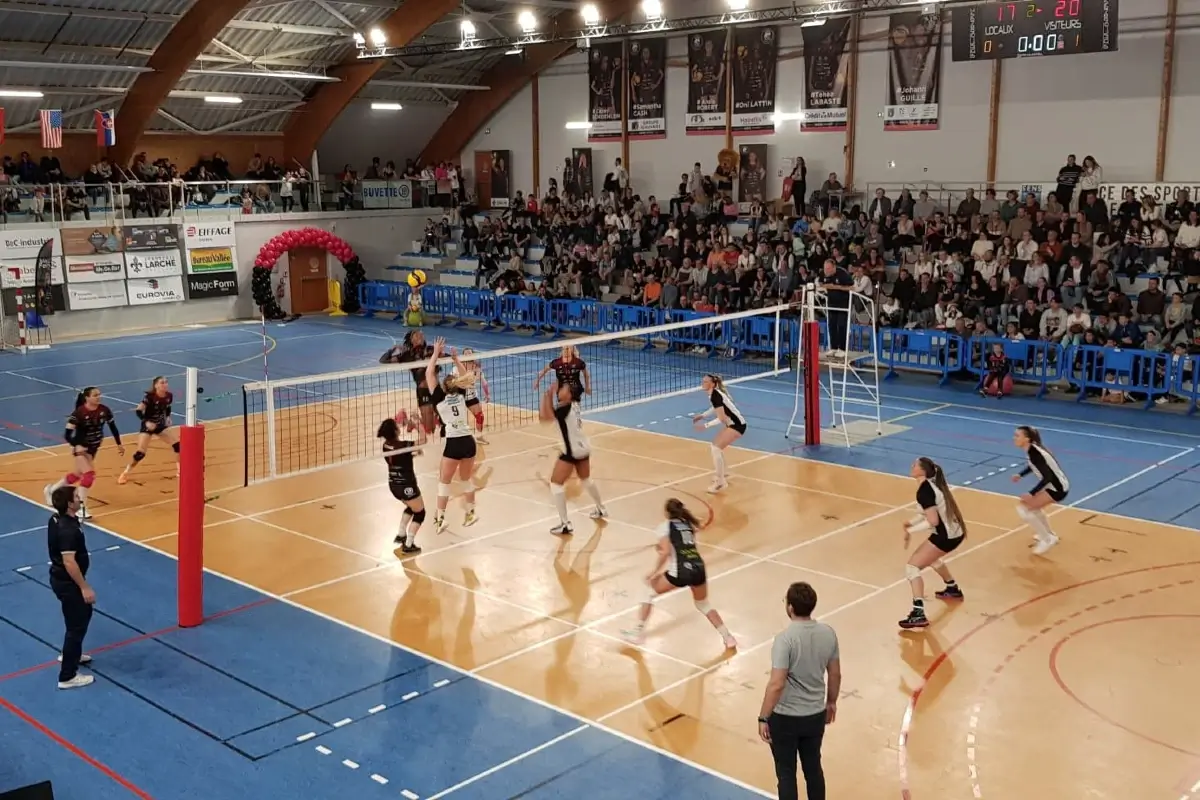Last Updated: March 1, 2024
Of all the possible rotations you may get in a volleyball team, 6-2 and 5-1 stand out in the crowd as the most common ones. Both of them excel in offense and defense, yet you need to implement them accordingly. They’re named after the setters and hitters in your team.
For instance, the 6-2 formation includes two setters and 6 players ready to spike (with the 2 setters doubling as hitters). On the other hand, the 5-1 formation has one dedicated setter and five players who can actually spike. Many teams use both of them throughout a game, yet you can also specialize in one or another.

Why Go for 6-2?
Each of the two setters must set while on the back row. No matter what rotation you pick, there should always be three attackers on the front row. In 5-1, on the other hand, the setter must do it on the front row only.
The main benefit of 6-2 is having three attackers, so it’s an offensive option, forcing the other team to push more people into defense. An extra hitter can and will make the difference.
But 6-2 isn’t perfect either. Since there are two setters, they’ll do their job only 50% of the time. But if you have two good setters, there are no drawbacks whatsoever.
Furthermore, 6-2 will also require a backup plan, especially when substitutions are over.
Player Roles in 6-2
Positions are crystal clear in the 6-2 formation, and each player has their own responsibilities. Here are the positions:
Setter
Makes the offense happen. With two setters, they should be in opposite positions. When one goes to the front, the other one steps back. If you find yourself lost, change your position based on the other setter’s position.
Outside hitter
Similarly, the two outside hitters will be in opposite positions.
Opposite hitter
Also known as the right side hitter, this position implies following the setter. If the setter goes on the front row, this attacker must be on the right side.
Middle blocker
The middle blocker is also a middle hitter. Again, two players will be on opposite sides of the court.
Libero
This position has unique tasks throughout the game. The player’s specializations include defending and passing. The libero can also hang around in the back row position and replace any other player.
Defensive specialist
This is a regular position that will mainly work on the back row. Like the libero, the position’s responsibilities include defending and passing.
Popular 6-2 Rotations
There are all kinds of formations and rotations in this format. Many times, they’re classified by the players’ positions. Other times, they’re classified by the substitutions. Here are some good choices.
6-2 With No Substitutions
There are a few general rules to remember here. First of all, the right back defender is supposed to set. The right attacker is meant to always hit. It’s their main responsibility. As for outsides and middles, they’ll just stick to their normal roles.
Obviously, there’s no need for any substitutions. At the same time, there will always be three attackers on the front row.
6-2 With One Substitution
Using one substitution means players will have more specific positions and responsibilities. This system needs a setter, a back row setter, and a front row opposite as main requirements. The team can use a single player that can work wonders as a back row setter and a front row attacker.
To make this system work, the setter begins in the back row, while the hybrid player goes to the front, becoming a front row opposite. Three rotations later, the back setter will end up in the front row. When this happens, the opposite goes into the game, replacing the front row setter.
The hybrid joins the back row and turns into a setter again. Three more rotations later, the substitution is reversed.
6-2 With Two Substitutions
This is a common variation of the classic 6-2. There are four right side players in this rotation, two setters and two opposites. Moreover, the system guarantees three front row attackers at all times, so it’s an offensive strategy.
In the beginning, there will only be one setter and one opposite in this formation. Three rotations later, the setter will end up in the front row, while the opposite will be in a serving position at the back. That’s when the substitutions are made.
The second setter replaces the first opposite, while the second opposite replaces the first setter at the front. The second setter is in a setting position, then. Again, there will be three attackers at the front.
Three more rotations later, the substitutions can be reversed, returning to original positions.
Understanding 5-1
The 5-1 formation has five attackers and a setter. One of the attackers can be removed if a libero comes on the court. Each player has their own role and responsibilities, of course. No substitutions are required to make the system work, so it’s a bit easier to implement.
Pros and Cons of 5-1
The 5-1 formation comes with some crystal clear benefits. The same setter will play throughout all the rotations, so there won’t be any surprises. The setter won’t change, meaning they’ll develop a strong connection with the other players.
Since players mainly stick to their positions, they can be more consistent. The opposite attackers will always be in rhythm, too, ranging from back to forth and vice versa.
The formation gives players the opportunity to add various attacks to offense, not to mention access to specialized roles. It’s also very simple to use for slide attacks.
But then again, that’s not perfect.
Since there isn’t much change, there’s no element of surprises, so the opposite team can observe and anticipate in a much easier manner. Blocking may suffer as well. Also, when the setter goes at the front, the outside must become more offensive.
Most of these drawbacks can be annihilated if each player completes their role by the book.
Who Can Benefit From 5-1?
There are certain teams that swear by the 5-1 system. If your team has a single setter with extraordinary abilities, this system will work well. If you have an outside attacker with great abilities but mediocre passing skills, the system will be excellent.
Teams that struggle with poor connection may also benefit from 5-1 because players are more consistent. At the same time, teams with new players may also benefit from 5-1 until they get to know each other better.
Furthermore, the system is great for those with a good slide hitter, a good back attacker and a setter who can actually score with dumps.
Recommended Read: Rotation Adjustments to Elevate Your Volleyball Game
Conclusion
Both 6-2 and 5-1 are great systems, but they’re not always implemented correctly. Implementing them by the book also implies having the right players for the required positions. Many times, it’s also about being flexible enough or just specializing in one thing or another.
There are obviously a series of variations for both systems as well. 6-2 is a bit more sophisticated and allows more variations based on players’ strengths and skills, but 5-1 can also be adapted to match players’ requirements and responsibilities. A good coach is a must for both systems.
